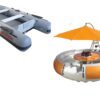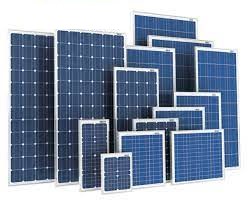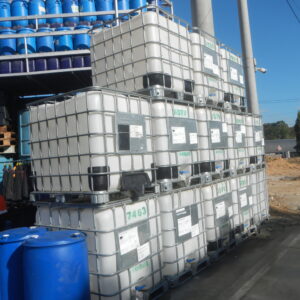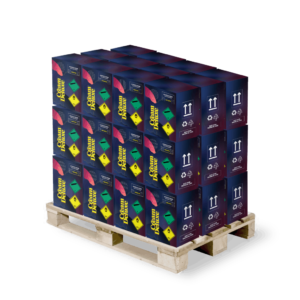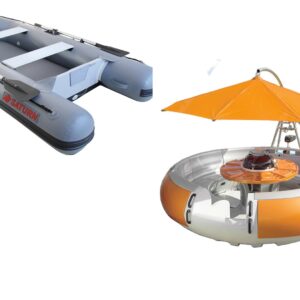A monocrystalline solar panel is a solar panel comprising monocrystalline solar cells. The Monocrystalline Solar Panels derives its name from a cylindrical silicon ingot grown from single-crystal silicon of high purity in the same way as a semiconductor. As the cell is constituted of a single crystal, it provides the electrons more space to move for a better electricity flow. The cylindrical ingot is sliced into wafers forming cells. To maximize the utility of the cells, the circular wafers are wire cut to an octagonal-shaped wafer. These cells have a unique look because of their octagonal shape. They also have a uniform color.
Mono-crystalline solar panel construction
As mentioned above, monocrystalline solar panels get their name from how they are made. Each of the individual solar cells contains a silicon wafer that is made of a single crystal of silicon. The single crystal is formed using the Czochralski method, in which a ‘seed’ crystal is placed into a vat of molten pure silicon at a high temperature. The seed is then drawn up and the molten silicon forms around it, creating one crystal. The large crystal also called an ingot, is then sliced into thin wafers that are used to make the solar cells.
Usually, a monocrystalline panel will contain either 60 or 72 solar cells, depending on the size of the panel. Most residential installations use 60-cell monocrystalline silicon panels.
Monocrystalline solar panel working principle
When sunlight falls on the monocrystalline solar panel, the cells absorb the energy, and through a complicated process create an electric field. This electric field comprises voltage and current and generates power which is governed by the equation P (power) = V (voltage) x I (current). This power can be used directly to power devices that run on direct current (DC). This power can also be converted to alternating current (AC) using an inverter.
Mono-crystalline solar panel Performance
Monocrystalline solar panels usually have the highest efficiency and power capacity out of all types of solar panels. Monocrystalline panel efficiencies can range from 17% to 20%.
Because monocrystalline solar cells are made out of a single crystal of silicon, electrons can flow easier through the cell, which makes the PV cell efficiency higher than other types of solar panels. The higher efficiency of monocrystalline solar panels means that they require less space to reach a given power capacity. So, monocrystalline solar panels will usually have a higher power output rating than either polycrystalline or thin-film modules.
In other words, you would need fewer monocrystalline solar panels in your solar power system to generate the same amount of power that, say, a greater number of polycrystalline solar panels would. This makes monocrystalline solar panels ideal for people with limited roof space.
Mono-crystalline solar panels Features
Monocrystalline solar cells are among the three types of materials that exhibit photovoltaic properties. The other two are polycrystalline solar cells and amorphous or thin-film solar panels. Monocrystalline solar cells’ characteristics are as follows:
- These cells in the panel have a pyramid pattern which offers a larger surface area to collect more energy from the sun’s rays.
- The top surface is diffused with phosphorus which helps to create an orientation that is electrically negative as compared to the bottom which has a positive electrical orientation, which in turn helps to create the electric field.
- To reduce reflection and thereby increase absorption, the cells are coated with silicon nitride.
- The produced electricity is collected through metal conductors printed onto the cells.
Mono-crystalline Solar panels Applications
Monocrystalline solar panels have many applications as follows:
- Being more efficient, these panels can produce more electricity for the same area as occupied by panels made of other materials. These panels are quite popular among solar rooftops in urban and rural areas.
- These panels are highly recommended for solar applications on a larger scale, on vast tracts of uncultivable land.
- Smaller panels generating between 5 and 25 Watts of electricity are useful for charging phones, cameras, and laptops.
- Panels generating between 40 and 130 Watts are useful for powering higher-wattage appliances such as refrigerators and microwave ovens.
- These panels are extremely useful in lighting up gardens
- These panels can form an array and are used to power rural homes.
- These panels are perfect for street lighting as stand-alone panels.
Mono-crystalline solar panels Cost
Monocrystalline solar panels’ price is higher than other kinds of solar panels because of the way these panels are manufactured. Their high efficiency and power ratings also bump up the price. Most premium solar panels, like the SunPower X-series and the LG NeON panels, are monocrystalline.
According to the Lawrence Berkeley National Laboratory, monocrystalline solar panels sell for about $0.05 per watt higher than polycrystalline modules. As solar technology and manufacturing have improved, the price difference between polycrystalline and monocrystalline panels has shrunk.


